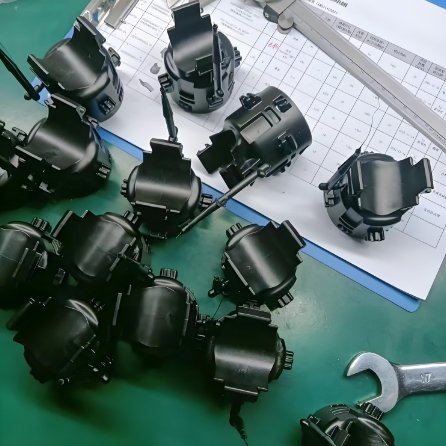
Modern vehicles rely on advanced electronics. Electronic injection molding plays a key role in producing these components. Mold makers ensure precision, durability, and cost-efficiency. Injection molding helps create lightweight, high-performance parts for cars.
1. Why Electronic Injection Molding is Essential for Automotive Electronics
1.1 High Precision
Automotive electronics require accuracy. Even small defects can cause failures.
1.2 Lightweight and Strong Materials
Injection molding produces durable yet lightweight components. This improves fuel efficiency.
1.3 Cost-Effective Mass Production
Molding allows large-scale production at lower costs. It ensures consistency in every part.
1.4 Design Flexibility
Molding supports complex shapes. This allows innovative electronic designs.
2. Key Automotive Electronic Parts Made with Injection Molding
2.1 Sensor Housings
- Protect delicate sensors from dust and moisture.
- Maintain performance in extreme conditions.
2.2 Control Modules
- Encapsulate electronic circuits in durable plastic.
- Prevents damage from vibrations and heat.
2.3 Connectors and Wiring Components
- Secure and insulate electrical connections.
- Improve vehicle safety and performance.
2.4 Lighting Components
- Precision molding ensures perfect LED housings.
- Enhances visibility and aesthetics.
2.5 Touchscreen and Dashboard Panels
- High-quality plastics provide smooth finishes.
- Improve driver interaction and durability.
2.6 Battery and EV Components
- Protect lithium-ion batteries from environmental factors.
- Ensure long-lasting performance in electric vehicles.
3. Materials Used in Automotive Electronic Injection Molding
3.1 Polycarbonate (PC)
- Used for touchscreen panels and light housings.
- High impact and heat resistance.
3.2 Polyphenylene Sulfide (PPS)
- Perfect for high-temperature applications.
- Used in engine control units.
3.3 Nylon (PA)
- Common in electrical connectors and gears.
- Provides strength and flexibility.
3.4 Liquid Silicone Rubber (LSR)
- Used for waterproof seals and gaskets.
- Offers durability and flexibility.
3.5 Acrylonitrile Butadiene Styrene (ABS)
- Provides strength and smooth finishes.
- Used for dashboard panels and housings.
4. The Injection Molding Process for Automotive Electronics
4.1 Step 1: Mold Design
Mold makers create high-precision molds. They ensure accuracy and durability.
4.2 Step 2: Material Selection
Each component requires specific plastic properties. Strength and heat resistance are key.
4.3 Step 3: Injection Molding
Molten plastic is injected into the mold. It takes the desired shape and solidifies.
4.4 Step 4: Finishing and Quality Control
Excess material is removed. Each part is tested for defects.
4.5 Step 5: Assembly and Integration
Parts are installed into the vehicle’s electronic systems.
5. Challenges in Electronic Injection Molding for Automobiles
5.1 High-Temperature Resistance
Automotive electronics face extreme heat. Materials must withstand thermal stress.
5.2 Vibration and Impact Resistance
Molded parts need durability to handle road conditions.
5.3 Miniaturization of Components
New cars use compact electronic systems. Molding must meet size constraints.
5.4 Sustainability Concerns
Automakers demand eco-friendly materials. Recyclable plastics are gaining popularity.
6. Innovations in Automotive Electronic Injection Molding
6.1 Overmolding for Enhanced Protection
Combining materials improves insulation and durability.
6.2 Multi-Shot Molding for Complex Parts
Creates multi-material components in a single process.
6.3 AI-Driven Quality Control
Smart sensors detect defects during production.
6.4 Sustainable Materials for Greener Cars
Biodegradable plastics and recycled materials reduce waste.
7. Future of Electronic Injection Molding in the Automotive Industry
7.1 Increased Use of Lightweight Materials
Reduces vehicle weight and improves efficiency.
7.2 Higher Integration of Smart Electronics
Advanced sensors and AI-driven systems will require precise molding.
7.3 Faster, More Efficient Production
Automation will speed up injection molding processes.
7.4 Improved Durability for Electric Vehicles
Stronger materials will protect EV batteries and circuits.
Electronic injection molding is transforming automotive electronics. Mold makers play a vital role in producing durable, lightweight, and cost-effective components. As technology evolves, injection molding will continue to shape the future of vehicle electronics.
